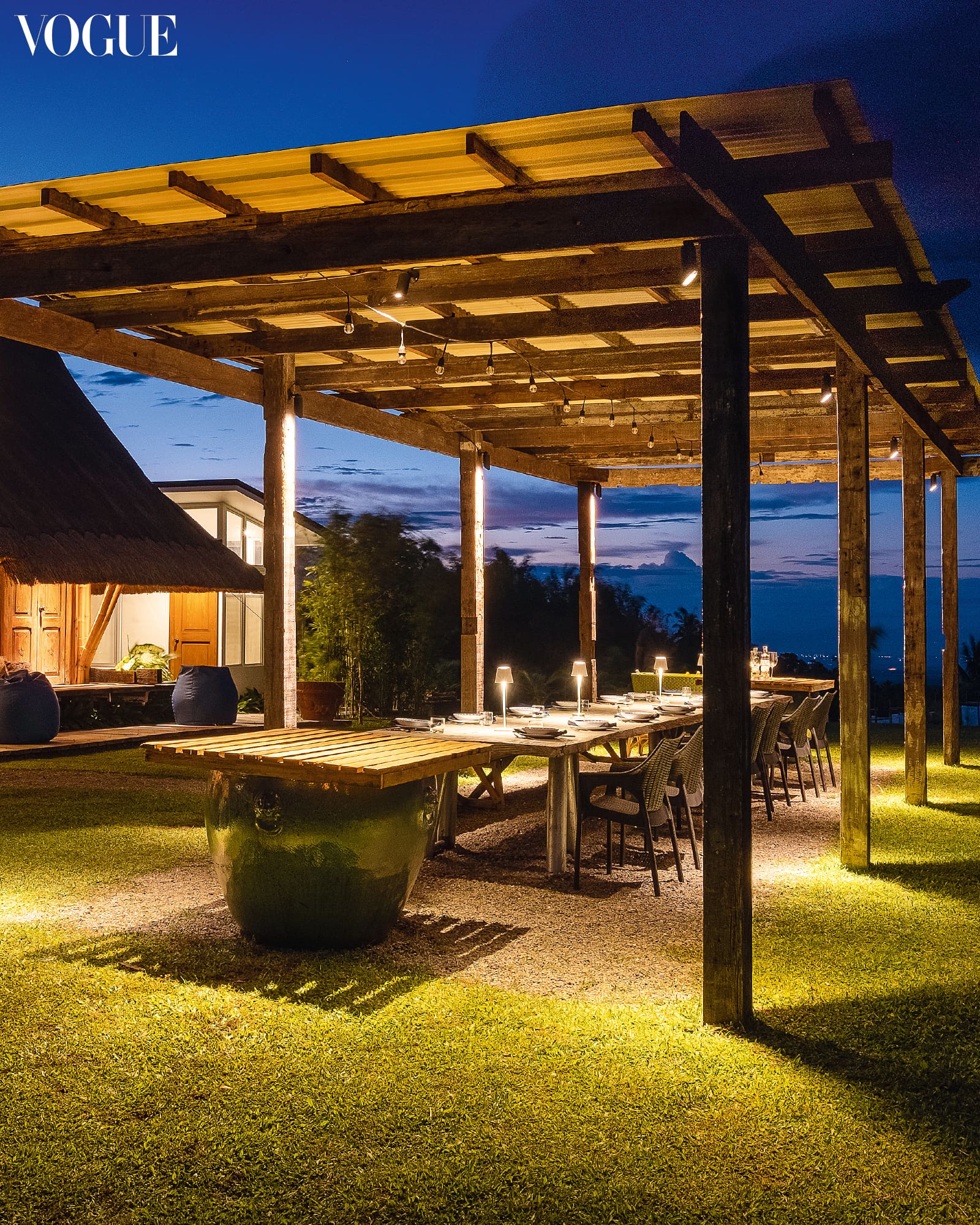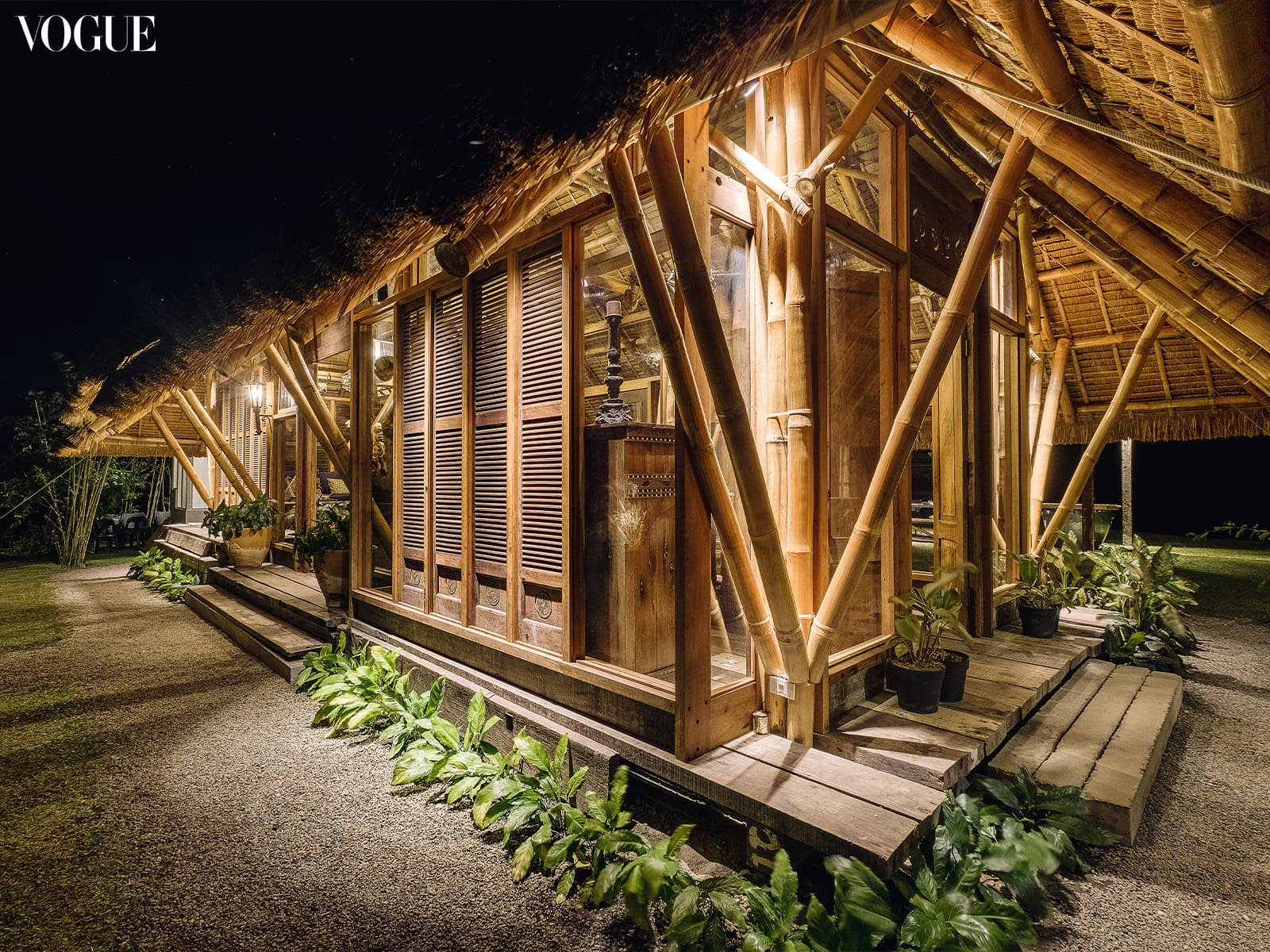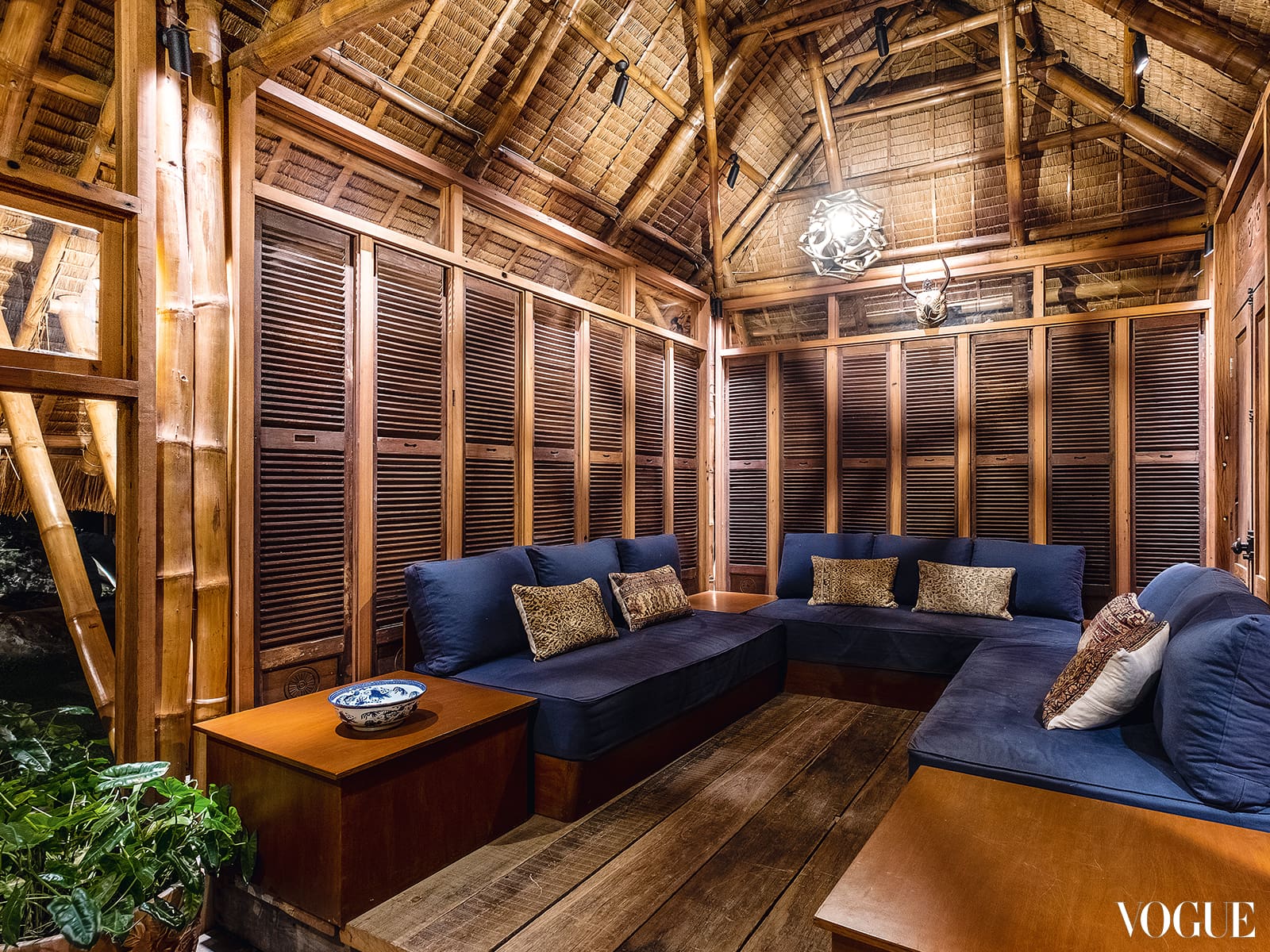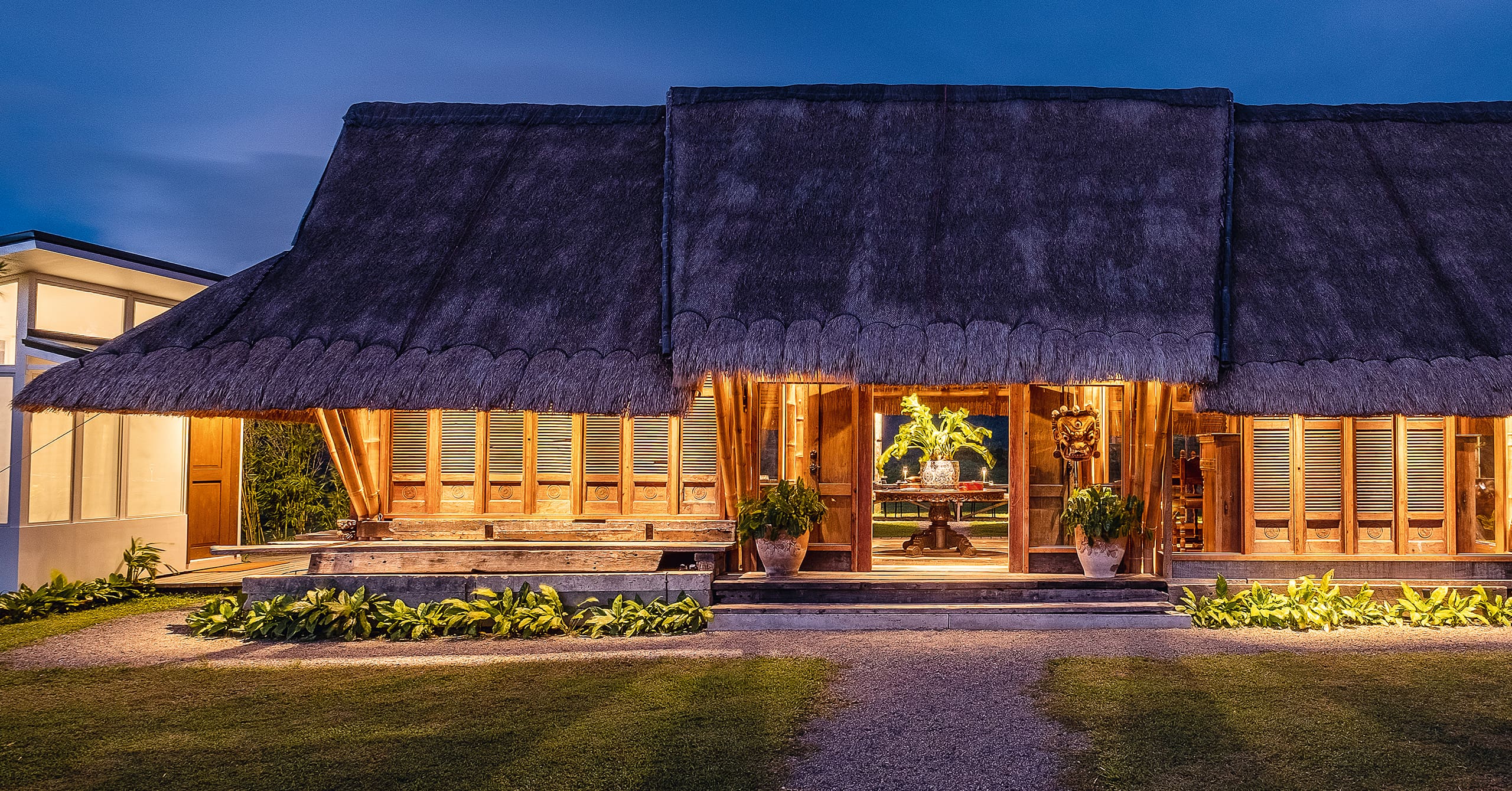Photographed by Ed Simon.
Photographed by Ed Simon
A house up in the mountains commands spatial experiences with the flick of a switch.
The role that lighting design has in both residential and commercial spaces can ultimately define the success of a space. “It is quite easy for people to omit the idea of lighting design in the whole blueprint,” says lighting designer Christine Sicangco. “But if you think about it, even in small scale residential projects, you plan where the wires go and where the power outlets will be situated. It just makes a lot of sense if you also plan how the lighting will affect the overall structure.”
A graduate of both Parsons School of Design and San Diego State University, she and husband Jovi co-founded CSLDI, a lighting design firm, when they moved back to Manila in 1994. Projects that push her to work with the technical aspect of lighting design and discover new ways of using light to achieve a symbiotic relationship with natural space are always exciting for Siangco. Case in point: this idyllic retreat high up in the mountains of Negros Occidental.

At first glance, the Tayap House is a study in equilibrium, offering a tonic to what used to be unending vistas of green surfaces and blue skies. It’s modern tropical aesthetic consciously incorporates the natural elements surrounding it. Simplicity is its central ethos. Neither imposing nor modest, it stands both delightful and commanding at the same time.
The owner of the estate is an avid collector of reclaimed hardwood from old homes and other sites, and Philippine hardwood is an integral building component in Tayap House. The architect, however, was tasked with using the planks without cutting them into smaller pieces. “The structure was to be a temporary installation, so cutting the wood was certainly out of the question,” shares lighting designer Christine Sicangco. “This house is thoughtfully designed so that it can be moved to another section of the estate if and when the owner deems to do so in the future.”

Tayap House sits solitary in the surrounding landscape. The space allows the exteriors to freely flow into the interiors and vice versa. The house’s orientation is in accord with the wind and air flow patterns in the area. This private residence is a sight to behold during the day, natural light streaming through its windows. But Sicangco had to ensure it still offered a different set of emotions, upon sunset, as well as in the night that follows. “The house is surrounded by open spaces, so that is one thing to consider,” she says. “I also gathered that the owners would like to enjoy the night sky.”
From one vantage point, a collection of large boulders frames the façade of the house. It becomes the foreground to a melange of organic textures from pebbled pavement, to the patches of grass, to weathered wood. The choice for straw reeds for the roof regulates the daytime temperature of the interiors. The antique wooden windows with varying patines, also from the owners’ private collection, render a feeling of natural randomness.

The architect’s design vision is seen in the seamless execution from the outdoors in. Each space is carefully created to make use of local construction materials to ensure efficient response to environmental conditions. Elements that are atypical of the style are sparsely incorporated for visual tension, effectively softening the structural symmetry. Sicangco was able to render a grand yet warm feel to the hall’s entrance by swathing the center with spotlights from different angles. In the hall, we find the aesthetic and functional use of bamboo culms and their calculated placements in relation to the hardwood pieces. This is the Tayap House’s toast to sustainability—using upcycled materials and combining them with the perennial characteristic of bamboo.
As the Tayap House proves, a design project requires a village to complete. “My firm’s success is built upon the collaboration we do everyday with lighting designers, architects, interior designers,” she says. “I am someone who is inspired by other people’s ability to create, and the process which allows them to offer something different.”

